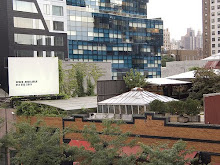

On August 19, 1991, Yosef Lifsh, a Lubavitcher Jew, lost control of his car while driving through the intersection of President Street and Utica Avenue in Crown Heights, Brooklyn, hitting and killing a seven year-old boy of Caribbean descent as he was playing on the sidewalk with his cousin. This event sparked the Crown Heights Riot, lasting for three days, and resulting in the murder of Yankel Rosenbaum, a 29-year-old Lubavitcher Jew, at the hands of Lemrick Nelson, a 16-year-old boy of African descent. At the time of the riots Crown Heights was almost exclusively composed of three distinct ethnic groups, Caribbean Americans of African descent comprising about 50% of the population, African Americans about 39% and Lubavitcher Hasidic Jews about 11%.[1] During the riots, African-Americans and Caribbean-Americans were targeting the Lubavitcher community, destroying their property, attacking them physically, and abusing them verbally with hate speech, but media coverage of the event framed the story in racial terms as black/white tension rather than as the tension existing between these three distinct ethnic communities co-existing in the same space.
By describing the riot in racial terms and making the primary motivator for the race riot, journalists removed it from a more accurate cultural and spatial context. As described by Omi and Winant, race is formed as a prime component of social relations in mainstream American society, therefore, it was considered commonsensical, albeit inaccurate, to interpret tensions within distinct ethnic groups as racial tensions. Although the accident was the spark for the violence and property damage that took place, tensions had been rising in the neighborhood as a result of the social isolation between the Lubavitcher Jewish community and the Caribbean American and African-American communities, while confined within a tight physical space. On top of that, the Jewish community had access to more community resources in visible ways to their neighbors as a result of the distribution by the City, the community's own initiative, and connections to other Jewish communities throughout the city. For example, the Hatzolah Ambulance Service was one of the emergency response teams servicing the neighborhood and it was privately funded by the Hasidim of NYC and staffed by the Lubavitcher community; it was also the first response to arrive on the scene of the accident. Because an angry crowd had surrounded Lifsh when the team arrived, they removed him from the scene before attending to the boy beneath his car. Although the team did not act inappropriately, this was interpreted by the Caribbean and African-American communities as an example of the emergency service prioritizing the Jewish members of the community over the other members, fueling their anger rather than dissipating it.
No amount of context can excuse the violence and anti-Semitism of the Crown Heights Riot, however, even this small amount of context, which is not the whole story, makes the events more understandable. The racialization of the riot in the media made the story more legible to American society, with its strict racial formations, but less truthful, and turned this story into another perpetuation of American racial ideology. As a result of the riots, several activist groups and community initiatives were started in order to bring these clashing co-existing groups together. “Mothers to Mothers” was formed in 1992 to bring together black and Jewish mothers.[2] This activism is aimed to increase the political power and integrity of the entire community.
- Olga Diaz and Elizabeth Perry

No comments:
Post a Comment